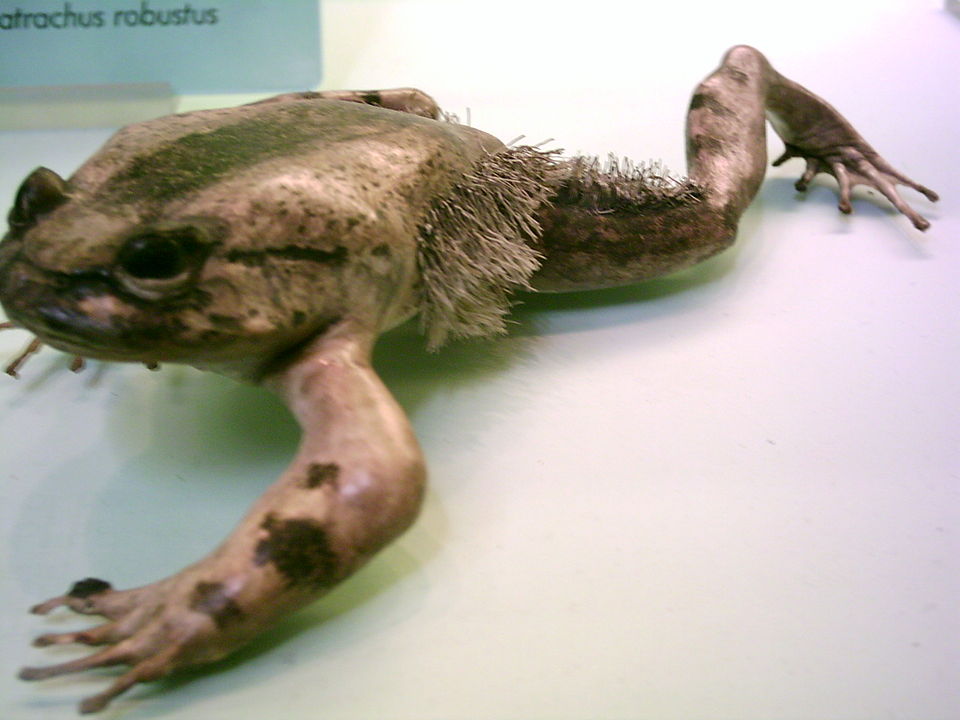The Wolverine Frog, also known as the Hairy Frog, is a fascinating amphibian that is found in Africa. This frog has some amazing features that make it stand out from other frogs, including its impressive size and hairy appearance. Learn more about this unique frog below.
Table of contents
Why is it called Wolverine frog?
Wolverine frogs are so named because of their powerful hind legs, which they use to jump great distances. They are also known for their sharp claws, which they use to catch prey. These frogs are found in the forests of Central and South America.
Does the Wolverine frog break its own bones?
Yes, the wolverine frog does indeed break its own bones. This amphibian has an unusual way of dealing with predators: it will literally break its own bones and twist them into sharp points that protrude from its skin. When a predator attacks, the frog will defend itself with these sharpened bones. While this may seem like a dangerous strategy, it actually works quite well for the wolverine frog, which is able to defend itself from many predators with its unique weaponry.
Is the Hairy frog extinct?
The Hairy frog (Trichobatrachus robustus) is a species of frog in the family Arthroleptidae. It is endemic to the Democratic Republic of the Congo. Its natural habitats are subtropical or tropical moist lowland forests, subtropical or tropical swamps, and rivers. It is threatened by habitat loss.
As of 2004, the International Union for Conservation of Nature (IUCN) has classified the hairy frog as “critically endangered”. The main threat to the species is habitat loss due to agriculture, logging, and mining. The IUCN has also placed the hairy frog on its “Red List” of endangered species.
Is the Wolverine frog the scariest frog?
The Wolverine frog is one of the scariest frogs out there. It’s got big, sharp teeth and it’s not afraid to use them. If you’re looking for a frog that will give you a good scare, the Wolverine frog is definitely the one to go for.
Why are Hairy frogs hairy?
Hairy frogs are hairy because they have a lot of hair on their bodies. This hair helps them to camouflage in their natural habitats and also provides protection from the elements. Hairy frogs are found in tropical regions of South America and Africa.
How does a Hairy frog protect itself?
The hairy frog’s skin is covered in sharp, stiff hairs. These hairs can puncture an predator’s skin, causing pain and deterring them from attacking. If a predator does manage to bite the hairy frog, the sharp hairs can also help the frog to escape by snagging on the predator’s mouth or throat. In addition to their sharp hairs, hairy frogs also have sharp claws on their toes which they can use to slash at predators.
What does the Wolverine frog do when it feels threatened?
The Wolverine frog is a species of frog that is native to the United States. When this frog feels threatened, it will emit a loud, high-pitched call that sounds similar to a wolverine’s screech. This call can be heard up to half a mile away, and it is thought to help the frog scare off potential predators. The wolverine frog is also known to be a very aggressive species, and it has been known to attack humans if it feels threatened. If you encounter a wolverine frog, it is best to leave it alone and give it plenty of space.
What does the Hairy frog eat?
The Hairy frog is an opportunistic eater and will consume a wide variety of items, including small mammals, reptiles, amphibians, birds, and fish. Invertebrates such as insects, worms, and snails are also part of the Hairy frog’s diet. This frog is known to eat its own skin periodically. This may help the frog to get rid of parasites or simply help it to shed its skin. The Hairy frog is not a picky eater and will consume whatever food is available.
Is the Wolverine frog aggressive?
The Wolverine frog is not an aggressive species of frog. However, they are known to be quite territorial, and will often fight with other frogs for space. They are also known to be quite vocal, and will often croak loudly to assert their presence. Overall, the Wolverine frog is not a particularly aggressive species, but they can be if they feel threatened or if their territory is being encroached upon.
Do Hairy frogs swim?
Hairy frogs are actually excellent swimmers! Their long, powerful legs propel them through the water with ease, and their webbed toes help them to maneuver quickly. In the wild, these amphibians often live near bodies of water, and they will even enter the water to hunt for food or escape from predators. So if you’re ever in need of a hairy frog swimming coach, you know who to call!
What animal eats Hairy frogs?
Different animals have different diets. However, some potential predators of hairy frogs include snakes, lizards, birds, and mammals. These animals typically eat smaller prey items, so the hairy frog would likely be considered a food source for them. If you are concerned about a particular animal eating hairy frogs, it is best to consult with a local wildlife expert.
Do hairy frogs have claws?
Hairy frogs have claws, but they are not as pronounced as those of other frog species. These claws help the hairy frog to climb and catch prey.
Takeaway
The Wolverine Frog is a fascinating creature with an interesting history. It’s no wonder that it has captured the imaginations of so many people. Who knows what other secrets this frog holds? We may never know, but that doesn’t stop us from wondering. What do you think is the next big discovery about this frog?

